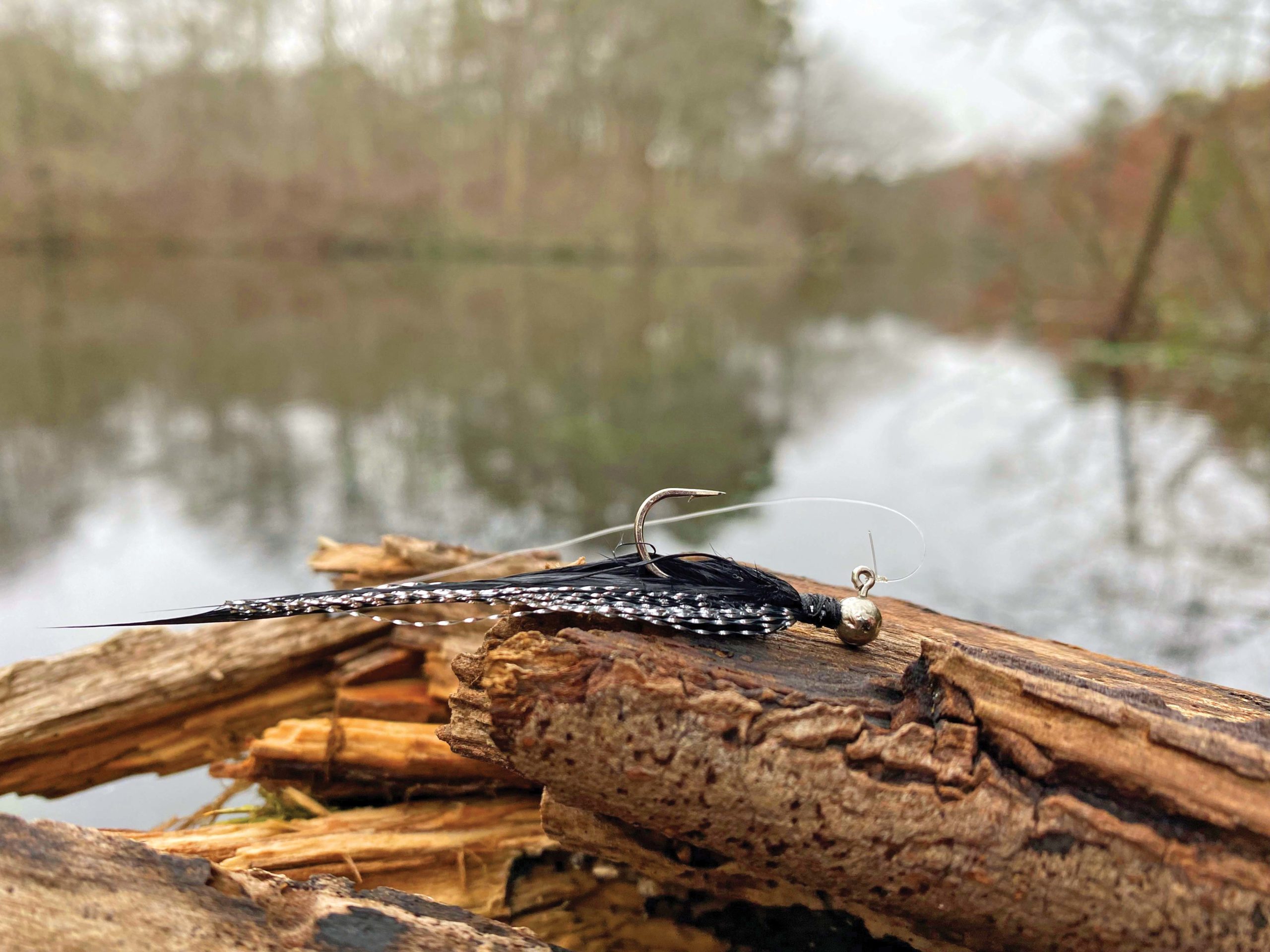
One lure that does it all—the black Marabou Jig.
In today’s world, we’re bombarded with ad after ad of products proclaiming to be the best or last one you will ever need. In the fishing world, it’s no different. I have a myriad of lures and baits to choose from, and most come with a decent price tag. These lures don’t hold a candle to my favorite and most productive bait when it comes to freshwater fishing—the black Marabou Jig.
Small Yet Mighty
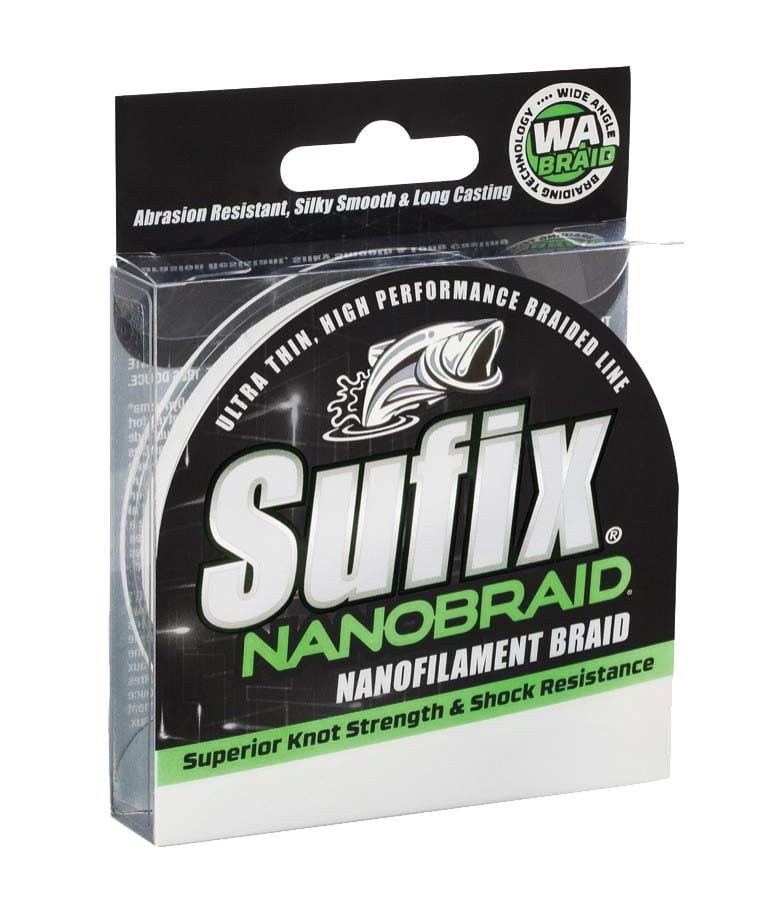
It doesn’t look like much when weighing in at a meager 1/32 ounces and less than 2 inches long. Despite its size, this jig has caught the vast majority of my freshwater fish by a ratio of 10:1 compared to other lures. The movement and action have yet to be duplicated even with all the new synthetic material being made in today’s world.
I have fished marabou jigs for over 45 years and have tallied up more than 150 species on them. Some of the weights I have thrown ranged from 1/100 to 1/8 ounce and in all spectrum colors. This article is about one in particular—the black 1/32-ounce jig. It will surely catch almost all of the species in your local waters. The American Eel is the one fish I haven’t caught on them yet, but I have hooked pumpkinseed and bluegills to carp and almost everything in between. It also excels at steelhead and Atlantic salmon in the rivers, consistently out-fishing other methods and baits.
Some of my more impressive catches on this mighty mite include a 13-pound largemouth, 30-pound carp, 10-pound walleye, 16-pound steelhead, 17-pound brown trout, and a 3.5-pound yellow perch. All these fish except the largemouth were caught in Northeast waters. I firmly believe if fish don’t hit this jig, they won’t hit any artificial.
Most of my freshwater fishing is done in the colder months. I think that this jig represents many different food sources for your average fish—leeches, hellgrammites, other large nymphs, and fish fry. The size also makes it seem safe to eat to the predator. I’ve always believed that the bigger a lure, the more a fish could find wrong with it. The size also allows one to fish it extremely slow, which is vital in the colder months when the fish are a lot more lethargic and unwilling to chase food.
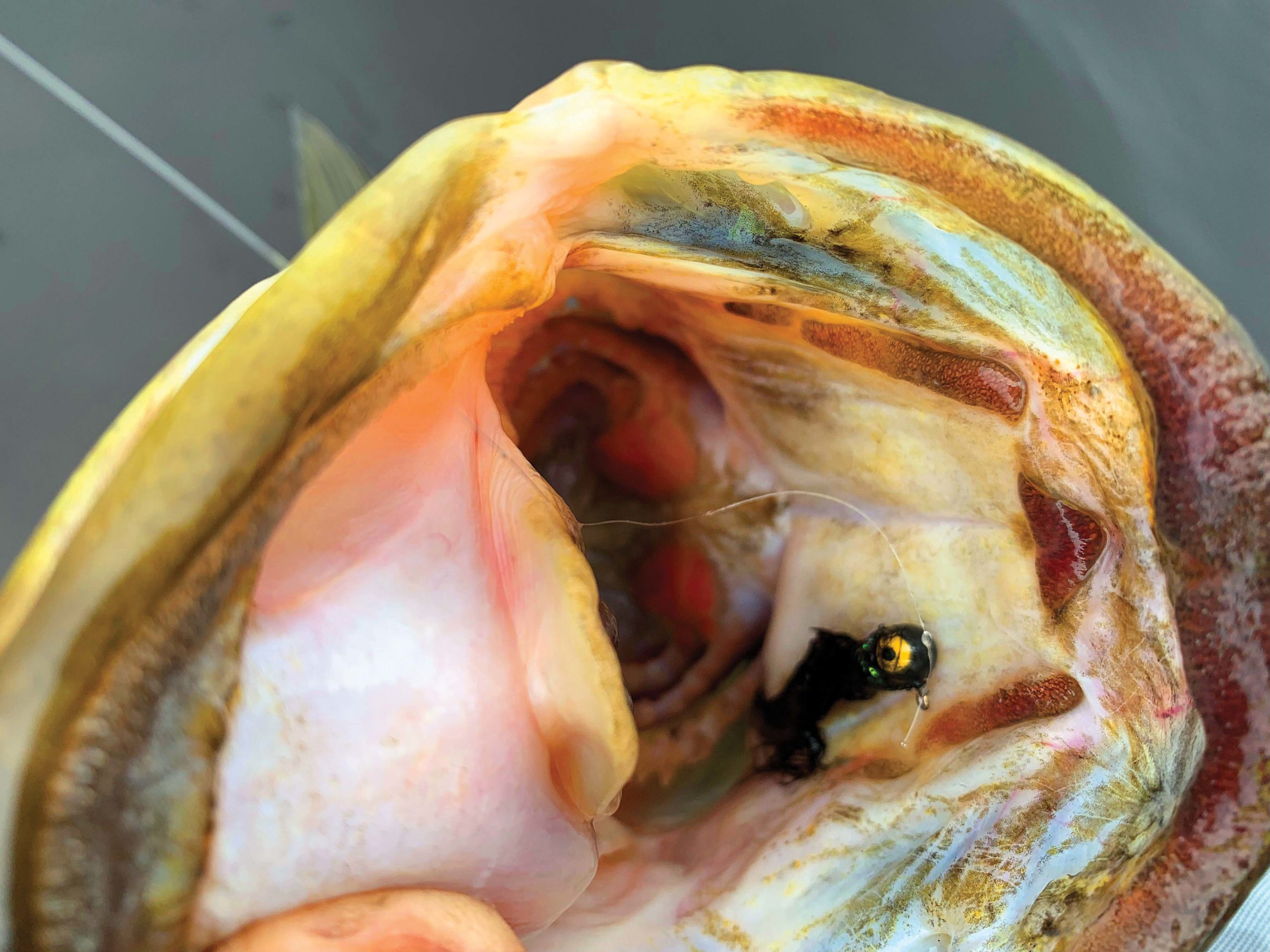
Tackle To Tote
Ultra-light fishing tackle is needed for light jig fishing. Luckily, many quality rods and reels do not cost an arm or leg. Rods from 4-1/2 to 7 feet long rated for 1 to 4 or 2 to 6-pound lines are usually ideal. I would recommend staying away from very fast action rods because the more moderate ones offer more of a cushion when fighting a fish. This results in fewer pulled hooks. I will also use a long noodle or steelhead rod when long casts are necessary. These rods are also ideal for fighting large fish on ultralight lines. St Croix has always been my rod company of choice for ultra-light fishing along with G-Loomis.
Reels should be small enough to match the rod—usually about a 2000 size. The most important characteristic is to have a smooth drag when choosing a reel. Pair the reel with a braided line in a 1 to 4-pound test. Several companies make a Nano braid suited for this type of fishing. Remember to replace often as the micro diameter braid doesn’t hold up as the heavier braids do.
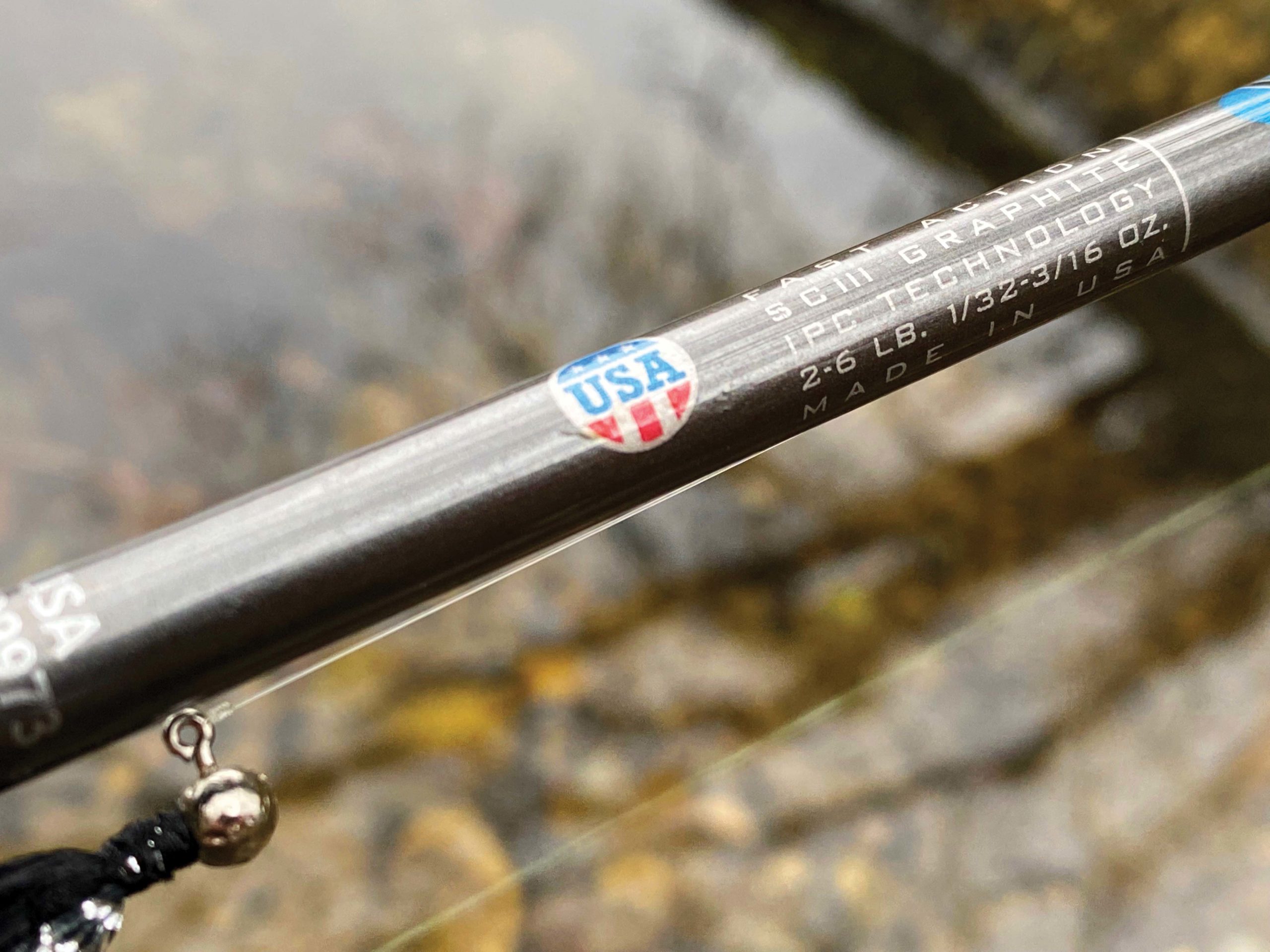
I use light-colored lines so that I can see the subtle signs of fishing a jig along the bottom. Most of our fish stay low in the water column, so consistently keeping your lure there is extremely important. The light-colored lines help show when the jig hits bottom or when you get a subtle hit. I also use fluorocarbon leader from 2 to 6-pound test for additional advantage in cold, clear waters.
Finding quality marabou jigs can be frustrating. The good news is that they’re straightforward to tie and extremely low in cost. One can usually make 4 to 5 jigs for a dollar and ten minutes of time—not a bad investment.
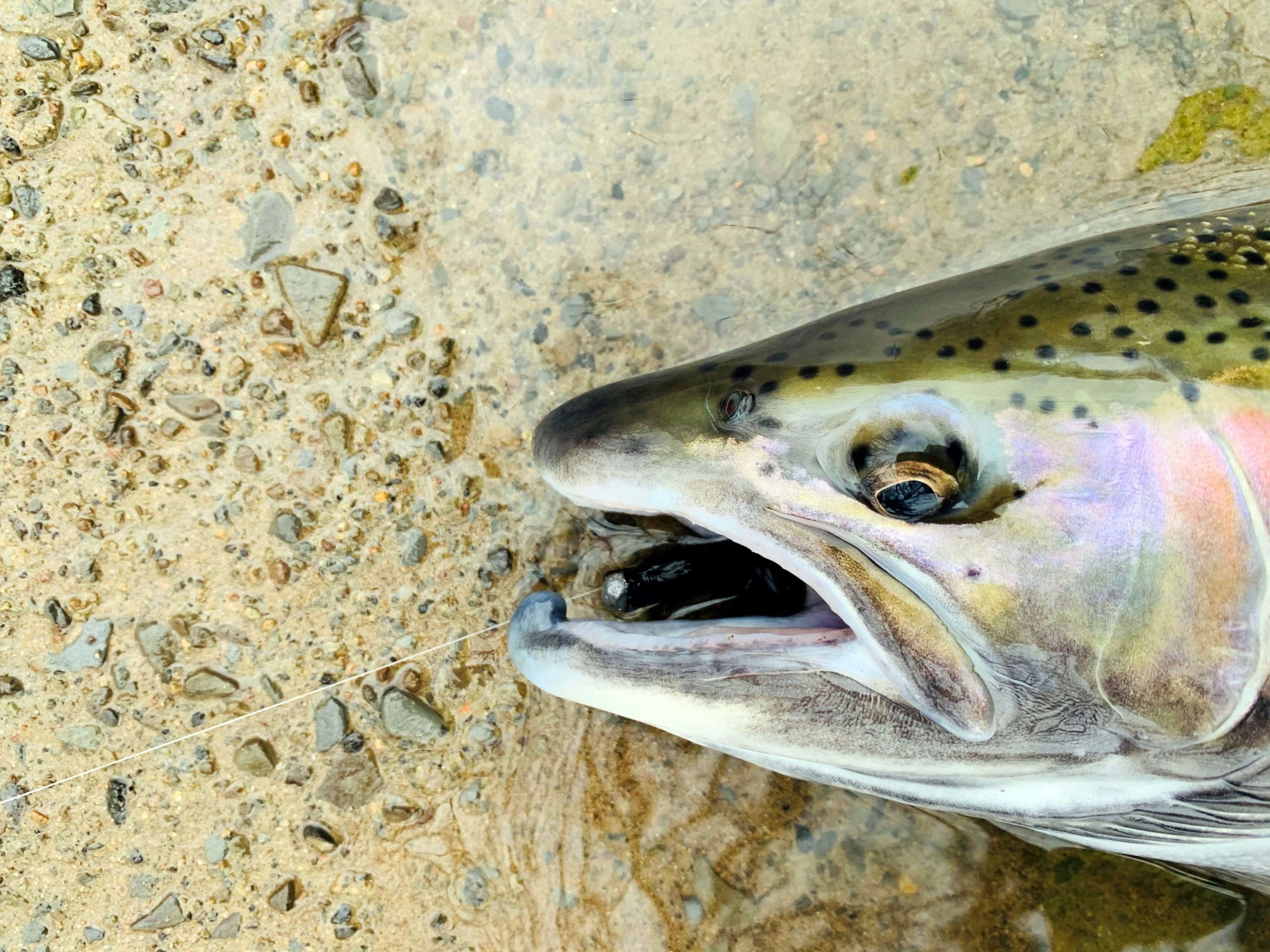
A Series Of Settings
As mentioned earlier, I do most of this fishing in the winter and spring when plant growth is nearly nonexistent, so I don’t have to worry about many snags. In the warmer months, one will have to fish areas that allow fish to run and fight without breaking off on plants like lily pads or other structure. I will guarantee that if you fish these jigs in the Indian summers of winter or early spring at your local lake, pond, or golf course, you will catch.
Keep the retrieve on the slow side and keep the jigging action at 1-foot jigs or less. Remember you’re fishing a tiny lure that’s imitating small prey—impart motion to mimic that. In my opinion, there is no better way to fish for our freshwater species than with a 1/32-ounce jig. This is a far cry from the Bass Pro guys fighting 5-pound fish on 60 to 80-pound test. Yes, you will lose a few fish due to the light tackle, but you’ll also hook many more than if you weren’t using it. Plus, the fight is unmatched by heavier tackle. Try the little mighty mite on your next trip.




